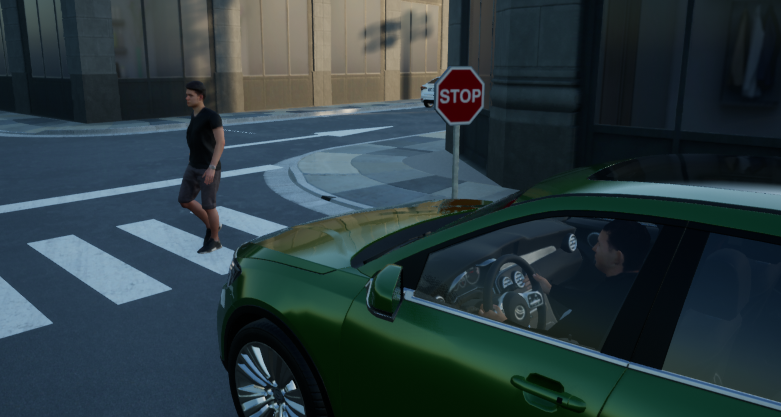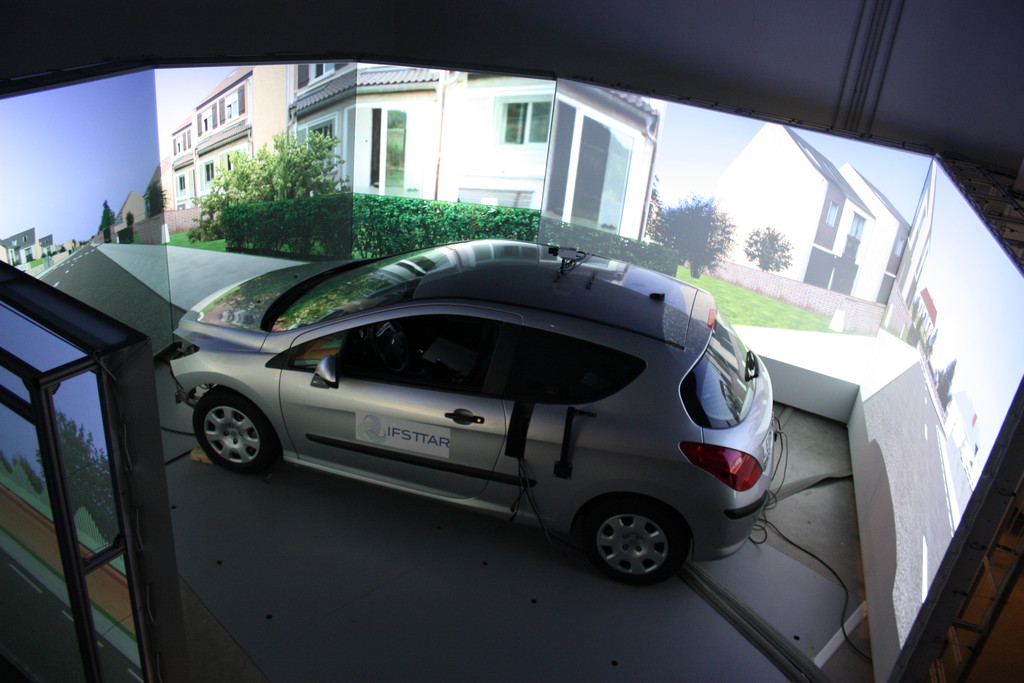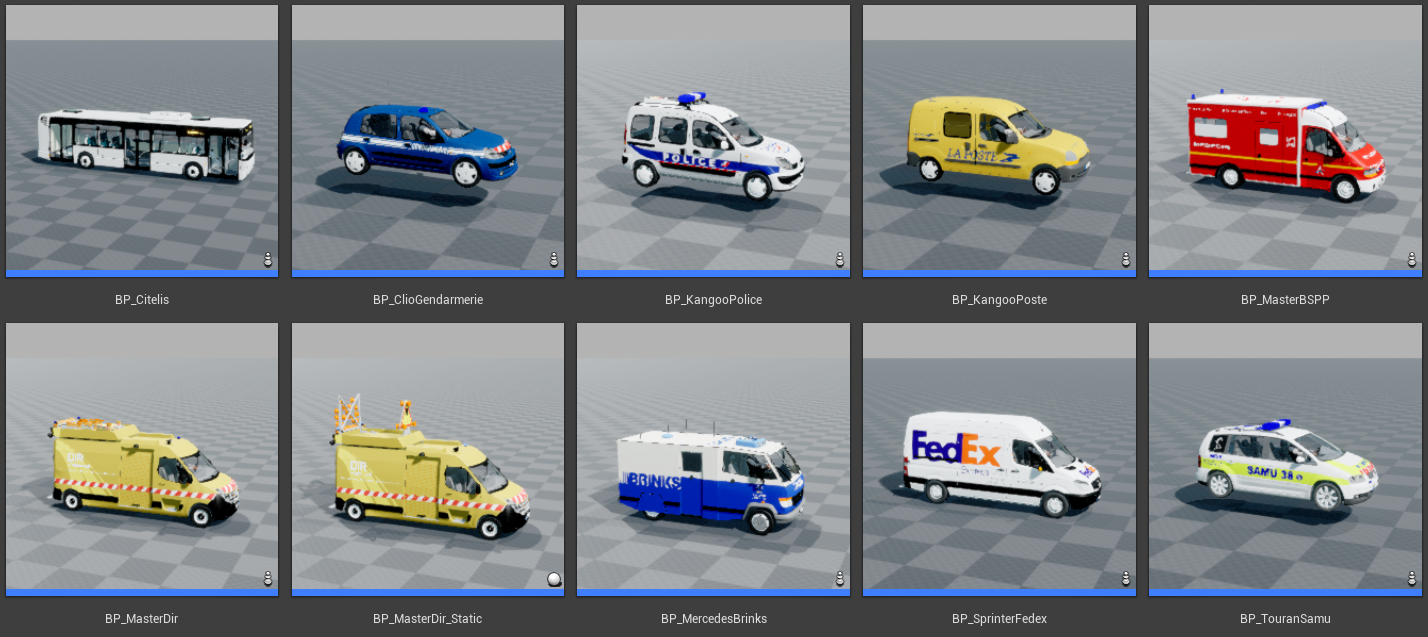What we've been up to, August 2021
What have we been up to in the past couple of months? What’s new in the V-HCD world? This post is a first of a hopefully long series where we showcase the new things in our driving simulation platform.
Virtual Driver
Our Virtual Driver has learned not to follow the lane’s center, with its new “Swerve” goal. This can be used for example to deviate from the lane to avoid an obstacle or overtake a bike. Alternatively, it can also be used if the Virtual Driver is driving a tractor on a road and kindly keeps to the right side to make overtaking it easier. Not a common use case, I admit, but we recently added a tractor in the platform and I felt obliged to have that working.
We’ve also greatly improved the Virtual Driver’s ability to stop at a given point by adding a dedicated goal for that purpose. Previously, stopping the car tended to be inaccurate, and it could be hard to make the Virtual Driver stop exactly where we wanted it to (e.g. right next to a stop sign). With the new goal, all that should be much improved.

SIMAX
SIMAX is our main driving simulator platform, which currently includes 10 projectors, 2 monitors, a real car (Peugeot 308) and a dozen computers to power all that up. The V-HCD platform doesn’t yet run on this hardware, mostly because it’s been heavily used lately and we don’t want to interfere with running experiments.

We started the process of getting the V-HCD on SIMAX by hooking the actual car to the platform. This means that we can drive a car in our UE4 virtual worlds using inputs from the Peugeot 308.
Next step obviously is to display said virtual worlds across all the screens. This will be done using nDisplay, but we’ll wait for Unreal Engine 4.27 to drop, since it’ll include an nDisplay 3D Config Editor which I really want to try, since writing config file by hand isn’t really my cup of tea.
SUaaVE
SUaaVE is a European H2020 research project, where the V-HCD holds a key part for a wide range of activities. On our side, we’re using it to study pedestrian and “Connected and Automated Vehicles” (CAV) interactions, with the intent of prototyping “external human machine interfaces” (eHMI) to help the CAV communicate with people, either inside or outside the car.
We’ve been using the V-HCD to create an experiment which includes scenarios from both the passenger and pedestrians point-of-views. We’ve also created innovative eHMI for the experiment, and we’ll be able to get data on their effectiveness and acceptability.
Nothing to show just yet, as this is an ongoing research project, but I’m really eager to show all of this off.
Pedestrian collisions
A researcher from LESCOT focuses on the visibility of vulnerable road users (VRU), and mostly works with simulation to (re)create complex situations. Therefore, they tend to have scenarios with critical interactions between car and VRU, which can sometime end in collision (depending on the driver’s reaction).
Being able to also simulate the collision, and have the “victim” VRU react in a realistic manner, could be a great improvement on immersion. So we’ve worked on that, and we can now run over pedestrians and cyclists. This is still a work-in-progress, but we can definitely show some progress.
Still messing around with collision for #DrivingSimulation in #UE4. pic.twitter.com/sM6jyAx3wx
— Bertrand Richard (@brifsttar) June 26, 2021
Bicycles
We’ve been spending quite some time working on bicycles, which include bikes, riders and their respective animations. As a baseline, we started using CARLA’s bikes, and then we decided to make our own from that.
So first, we had to find city bikes (e.g. from bicycle-sharing services) 3D models. Then rig them to our skeleton. We also had to work on the bike animation, i.e. bike drive, pedals.
In parallel, we started working on the rider animation. We wanted a generic animation system (i.e. Animation Blueprint) that would work with all bikes, and wouldn’t require new animations handmade for each. Our requirements included a wide range of animations: starting/stopping (foot on ground), pedaling, freewheeling, arm movement to signal direction changes, head movement to look at other people in the scene. We’re still not done through the list, but we’ve been able to do most of them in Blueprint only (with IK), and we’re using our Manus-VR Polygon and Prime gloves to record the more complex movements, which we’ll soon integrate into our Animation Blueprint (via blending).
All of this is a work in progress, but I really like what we have so far. And we’ve got plans for other vehicles than bicycle, so expect more on that area!
Special vehicles
I’ve been reminded about DMI, which has a huge collection of vehicle 3D models. And more than just cars, it contains a lot of special or unusual vehicles, for example emergency, delivery, buses, construction, etc. And more than that, thanks to creator Marsupi3D, there are a lot of french vehicles, which is something we always have difficulty finding when we need them.
I’m still unsure whether we’re legally allowed or not to use them in the V-HCD, but I still took the time to import some of them, to at least assess the feasibility, and to use the opportunity to improve my (near non-existent) Blender skills.

Above is the list of what’s imported so far. Depending on vehicles, I also added various lights (brake, blinkers) or emergency siren (sound, gyros). The bus also has doors that can open/close, and the highway patrol vehicle can have its roof arrows lit up.
I’m really hoping we’ll be allowed to use them, because they’re all really realistic looking and would be a great addition to our fleet; we’re always trying to build edge-cases scenarios, and having such vehicles would benefit us.
Our Marketplace Shopping Cart
To conclude, here’s a list of recently added Marketplace product that are interesting for driving simulation.
Velocity Shadow Car, the latest car from lyoshko in the “Velocity” series. This is, in my opinion, the best car creator in the Marketplace, so it’s always nice to have new content from them.
Der Sky is a relatively new content creator on the Marketplace, and their product are just perfect for driving simulation. Street Props, Parking Garage Props, traffic signs for many countries, etc. They have everything for your roadsides.
Digital Dive Studio is a reference for vehicles, notably for their Drivable Cars: Advanced Pack, which contains a lot of realistic and useful features (e.g. damage and deformation, ground effects). They recently released a similar pack for motorbikes: Rideable MotorBikes: Advanced Pack, which will probably be a great starting point for anything motorbike related.
For overall environment creation, we’re planning to buy modular cathedrals, city lights and a modular village. If you’re shopping for fences, Meik.W Models has what you (and we) need.
For car related assets, this new sound effects pack contains a lot of useful assets which we currently don’t have. This animations pack will also probably find use in our various projects.
Finally, something that’s not released yet but looks very promising: UE4 Procedural City Tools from Joshua Giles. There are a few procedural city tools out there for UE4, but none that really satisfies our requirements. Hopefully this one will.